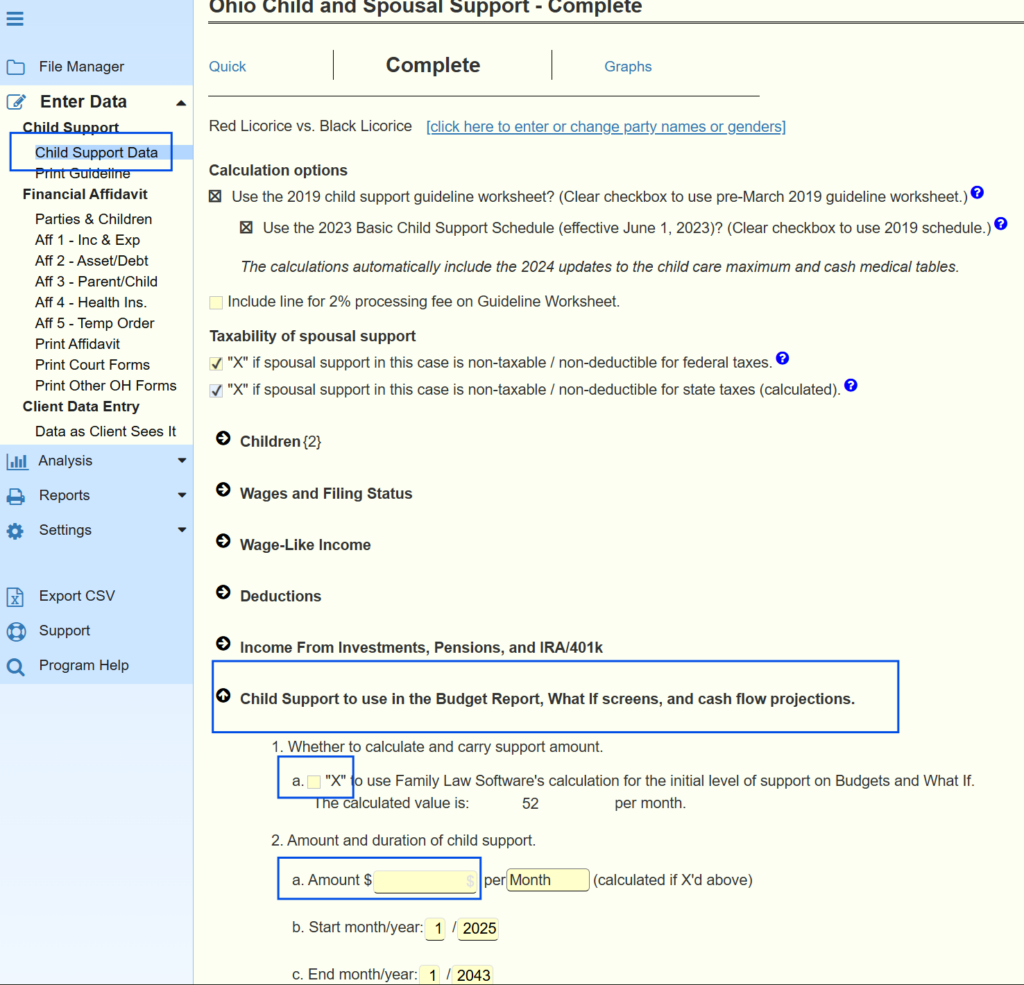The Ohio statute is not set up to give a definitive result in the case of exactly equal parenting.
You can make Party A the custodial parent for both children.
Or, you can make Party B the custodial parent for both children.
In a state whose statute is designed to deal with shared custody, those two situations would give you the same result.
However, Ohio is not such a state.
You get different results in these two situations.
One alternative, which some people do, is to do the following:
1. Make party A the custodial parent for both children.
2. Write down the child support amount.
3. Make party B the custodial parent for both children. (Make sure the tax exemption is the same in both cases.)
4. Write down the child support amount.
5. Net the two amounts. ((First amount + Second amount) / 2).
This is just one approach, which you can use if you would like something that has a feeling of a formula to it.
Another approach is to say that there should be no child support, although this is less appealing in a case in which the party’s incomes are disparate.
Or, simply negotiate an amount, because the child support statute does not operate definitively in a situation of exactly equal parenting in Ohio.
In any event, you want then to tell the software that you are not using the calculated amount, so it uses the amount you specify in the Balance Incomes spousal support calculation, and budget and cash flows.
To do that, scroll down to the section labeled “Child Support to use in the Budget Report, What If screens, and cash flow projections,” then clear the check box that says you are using the software’s amount.
Then enter the amount you determine.

This amount will then carry to the budgets and Balance Incomes calculations.
There are other factors to consider as well.
If the parties are going to be consistent between their filing for child support and their tax filings, then they need to designate one parent as the majority time parent.
This can then have tax impact, which itself impacts the child support calculation.
This blog post explains.
In family law software, you can also use the General What If to see the impact on the parties of different levels of child support.
This can be very useful in arriving at an outcome that is acceptable to both parties.